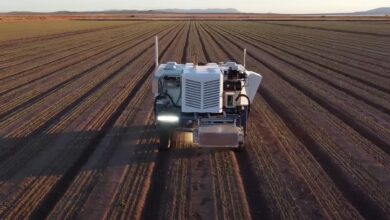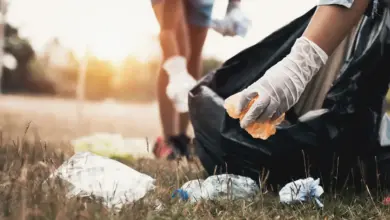At Geography Scout, we are deeply committed to researching and promoting actionable solutions for reducing plastic pollution and waste in our world. The issue of plastic pollution is vast and well-documented, with some estimates suggesting that up to 90% of debris in our oceans consists of plastic. This problem is not just limited to marine environments but affects ecosystems and communities worldwide. While the scale of the issue is daunting, there are practical steps we can all take to make a meaningful impact. This guide will explore simple, effective strategies to drastically reduce our plastic consumption and promote sustainable practices.
1. Understand the Scope of the Problem
The problem of plastic pollution isn’t new, but it’s growing at an alarming rate. A recent conference organized by the Hong Kong-based NGO Ocean Recovery Alliance highlighted the urgency of finding solutions. Experts gathered to discuss the pervasive nature of plastic in our environment and to brainstorm ways to manage it more effectively. The conclusion was clear: while we may not stop producing plastic anytime soon, we must improve how we manage it, particularly in the post-consumer supply chain.
2. Better Sorting and Recycling: A Critical Need
One of the primary challenges in managing plastic waste is the inefficiency of current sorting and recycling systems. Doug Woodring, director of Ocean Recovery Alliance, emphasizes that the issue isn’t a lack of demand for recycled plastic, but rather the difficulty in obtaining it in reusable forms. Technologies like those developed by MBA Polymers, a California-based company, are making strides by electronically sorting 40 types of plastics into feedstocks. However, these technologies need to be scaled up and implemented more widely.
Geography Scout supports the idea of investing in better sorting technologies and local processing facilities. Many municipalities currently allow intermediaries to sort through trash, extract valuable plastics, and sell the bulk overseas. While this may reduce landfill, it also means missing out on the innovation and job creation potential from processing plastic waste locally. Companies like MBA Polymers are profitable because they use a fraction of the energy required for conventional plastics production, and their raw material—plastic waste—is essentially free.
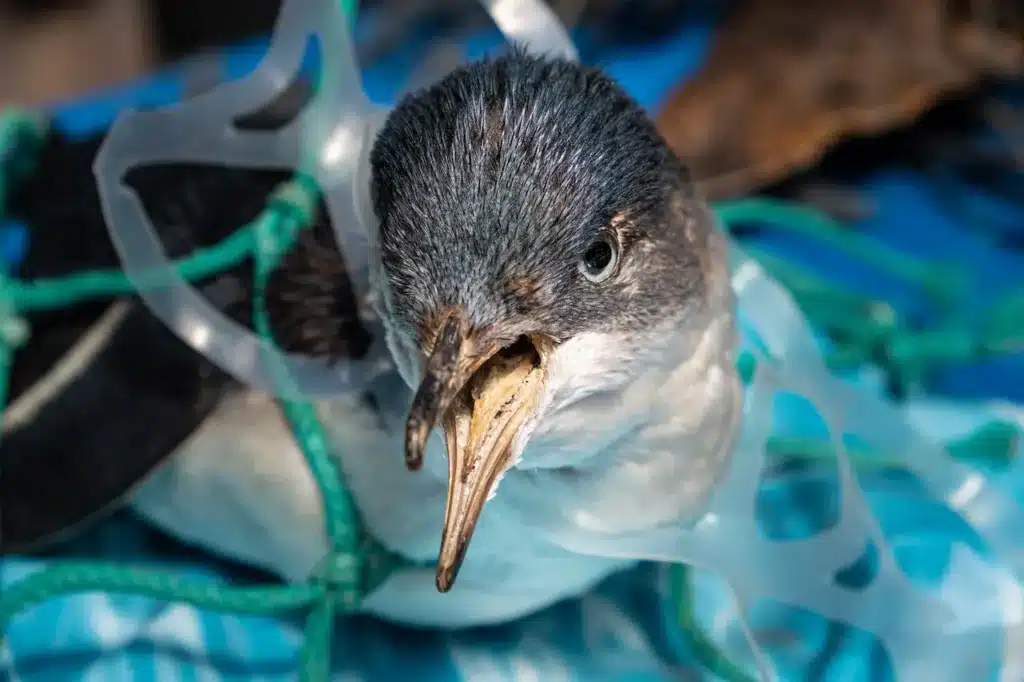
3. Wean Yourself Off Single-Use Plastics
Half of all plastic produced is designed for single-use items—grocery bags, plastic wrap, disposable cutlery, straws, and coffee-cup lids. These items are used once and then discarded, contributing significantly to the plastic pollution problem. One of the simplest ways to reduce your plastic footprint is to replace these single-use items with reusable alternatives.
Start by carrying reusable totes to the store, bringing a garment bag to the dry cleaner, using silverware at the office, and taking a travel mug to the coffee shop. These habits may seem small, but they can have a large cumulative impact. Geography Scout’s research shows that consistent use of reusable items can significantly reduce the amount of plastic waste generated by individuals.
4. Stop Buying Bottled Water
Each year, nearly 20 billion plastic bottles are thrown away. This staggering figure underscores the importance of moving away from bottled water. Instead, carry a reusable water bottle with you. Not only will this save money, but it will also reduce the demand for single-use plastic bottles. In many cases, tap water is just as safe—if not safer—than bottled water, making this a simple switch that benefits both your wallet and the environment.
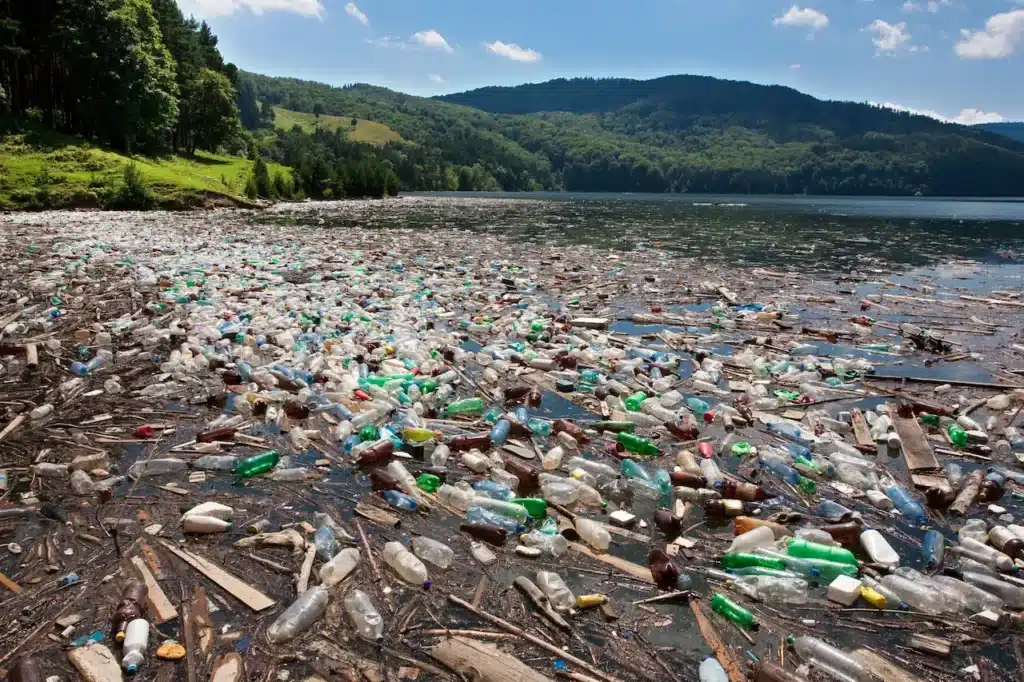
5. Boycott Microbeads and Choose Natural Products
Microbeads, those tiny plastic particles found in many beauty products such as facial scrubs, toothpaste, and body washes, are a significant contributor to plastic pollution. Because of their small size, microbeads easily slip through water-treatment plants and end up in our oceans, where they are often mistaken for food by marine animals.
Opt for products with natural exfoliants like oatmeal or salt, and be cautious when choosing cosmetics. The Plastic Soup Foundation, a Dutch nonprofit, found that only 13% of nearly 8,000 products tested from Europe’s largest cosmetics manufacturers were free of microplastics. By making more informed choices, consumers can reduce their contribution to this type of pollution.
6. Cook More, Use Less Plastic
Cooking at home is not only healthier but also reduces the need for plastic takeout containers and doggy bags. When you do order takeout or eat out, consider bringing your own food-storage containers for leftovers. Geography Scout recommends choosing wooden cutting boards over plastic ones, as recent studies have shown that plastic cutting boards can be a significant source of microplastics in our diet. Wooden cutting boards, with proper care, can last for many years and are a safer alternative.
7. Lighter Packaging and Eco-Friendly Choices
Much of the plastic used today is unnecessary, especially in packaging. Companies like Replenish are rethinking product design by offering reusable bottles and concentrate cartridges, drastically reducing the need for single-use plastics. For instance, Replenish sells reusable spray-cleaner bottles along with cartridges of cleaner concentrate, avoiding the waste of shipping new bottles filled mostly with water. This kind of innovation highlights how much of our packaging could be reimagined to reduce plastic waste.
When shopping, consider buying in bulk to reduce packaging waste. Single-serving yogurts and tiny packages of snacks may be convenient, but they generate a disproportionate amount of waste. Instead, buy larger containers and store the contents in jars at home. Look for products with eco-friendly packaging, like glass jars instead of plastic, and support companies that prioritize sustainability.
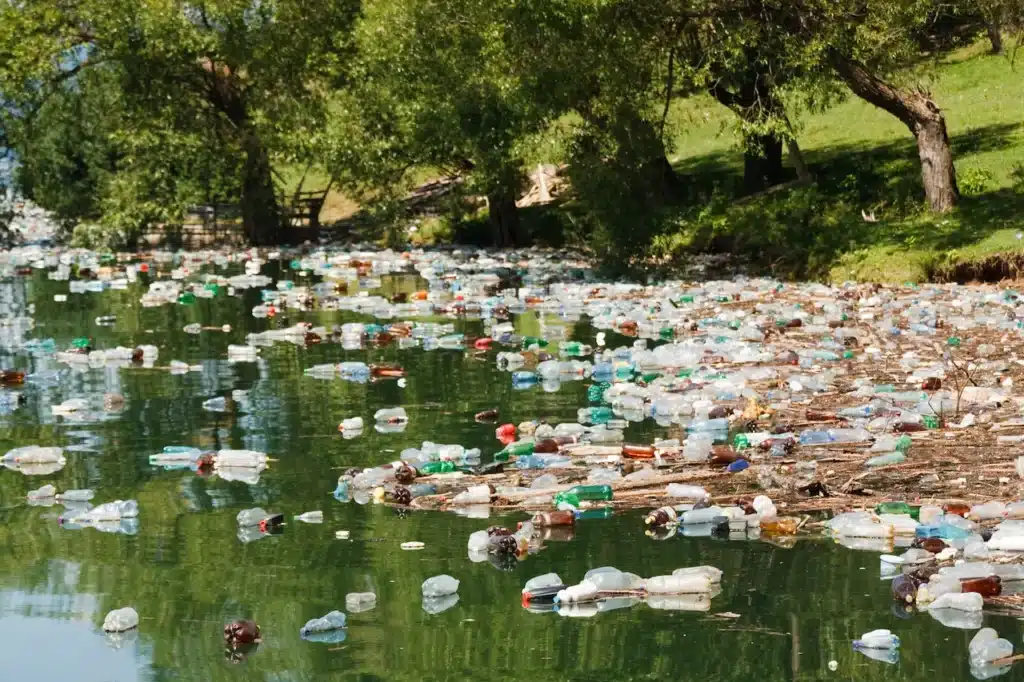
8. Extended Producer Responsibility
Extended Producer Responsibility (EPR) laws are an effective tool in reducing plastic pollution. These laws hold producers accountable for the post-use collection of plastics and other waste, incentivizing them to design products that are easier to recycle and have a lower environmental impact. Doug Woodring points to countries like Taiwan, where up to 90% of plastic is recycled, as a model of success. In contrast, the United States has a much lower recycling rate for plastics, around 12.1% according to a 2010 government report.
Geography Scout advocates for the adoption of EPR laws worldwide, as they not only reduce pollution but also help catalyze after-markets for recycled materials. In Taiwan, for example, recycled plastics are used to produce soccer jerseys, blankets, zippers, flower pots, and even entire buildings. This approach treats plastic as a resource rather than waste, which is crucial for achieving sustainability.
9. Recycle: It Still Matters
While recycling alone cannot solve the plastic pollution crisis, it remains an important part of the solution. The recycling rate for plastics in the United States has fallen to around 6%, according to a recent report from Beyond Plastics. To improve this, we need to make recycling more accessible and efficient.
Geography Scout recommends familiarizing yourself with the types of plastics that can be recycled in your area. Check the number on the bottom of containers: #1 (PET) and #2 (HDPE) are commonly accepted by curbside recycling programs, while #5 (PP) may be recyclable in some areas. Always remember, however, that reducing plastic use is more effective than recycling. The less plastic we use, the less we need to recycle.
10. Support a Bag Tax or Ban
One of the most successful strategies to reduce plastic waste has been the implementation of plastic bag taxes or bans. Cities like San Francisco and Chicago have led the way, and over 500 other cities, counties, and states have followed suit. These measures make plastic bag use less desirable and encourage consumers to switch to reusable bags.
Geography Scout encourages individuals to support such legislation in their communities. By reducing the prevalence of single-use plastic bags, we can significantly cut down on the amount of plastic waste that ends up in landfills and oceans.
11. Choose Clothing Made from Natural Fibers
Another often-overlooked source of plastic pollution is synthetic fibers in clothing. Materials like nylon, polyester, and acrylic shed microplastics during washing, which then make their way into our waterways. An estimated 9% of microplastics in the ocean come from these synthetic fibers.
Whenever possible, opt for clothing made from natural materials like cotton, wool, and linen. These materials are biodegradable and do not contribute to the microplastic problem. Geography Scout also supports research into new textile technologies that reduce fiber shedding and promote more sustainable fashion practices.
12. Lightbulbs and Schools: Creative Reuse
In many developing countries, plastic bottles are being creatively repurposed to provide basic amenities like lighting and even school buildings. The MyShelter Foundation’s “1 Liter of Light” project in the Philippines uses plastic bottles filled with a mixture of water and chlorine as alternative lightbulbs. These bottles are installed in roofs, where they refract sunlight into homes, providing the equivalent of 60 watts of light for about five hours. The same foundation is also using plastic bottles to construct school buildings.
While these initiatives may not solve the global plastic crisis, they demonstrate the potential of creative reuse. Geography Scout believes that innovative solutions like these can inspire larger-scale efforts to repurpose plastic waste, turning a problem into an opportunity.
13. Put Pressure on Manufacturers
While individual actions are crucial, the real change needs to come from corporations with much larger footprints. Geography Scout encourages consumers to use their voices to push for more sustainable practices. If you believe a company could reduce its plastic use or improve its packaging, let them know. Write letters, tag them on social media, and, most importantly, support companies that are already making efforts to reduce their environmental impact.
By choosing to spend your money with more sustainable competitors, you can help drive the market towards better practices. Consumer pressure has already led many companies to reduce plastic packaging and invest in more sustainable alternatives. Your actions can make a difference.
Conclusion: Taking Action with Geography Scout
At Geography Scout, we are dedicated to researching and promoting strategies to reduce plastic pollution. The problem may be vast, but with collective effort, we can make a significant impact. By adopting the practices outlined in this guide—reducing single-use plastics, supporting better recycling, advocating for legislation, and pressuring manufacturers—we can all contribute to a healthier, more sustainable world.
Visit our website to learn more about our work, find additional resources, and discover how you can get involved in the fight against plastic pollution. Together, we can create a future where plastic waste is minimized, and our environment is protected for generations to come.
